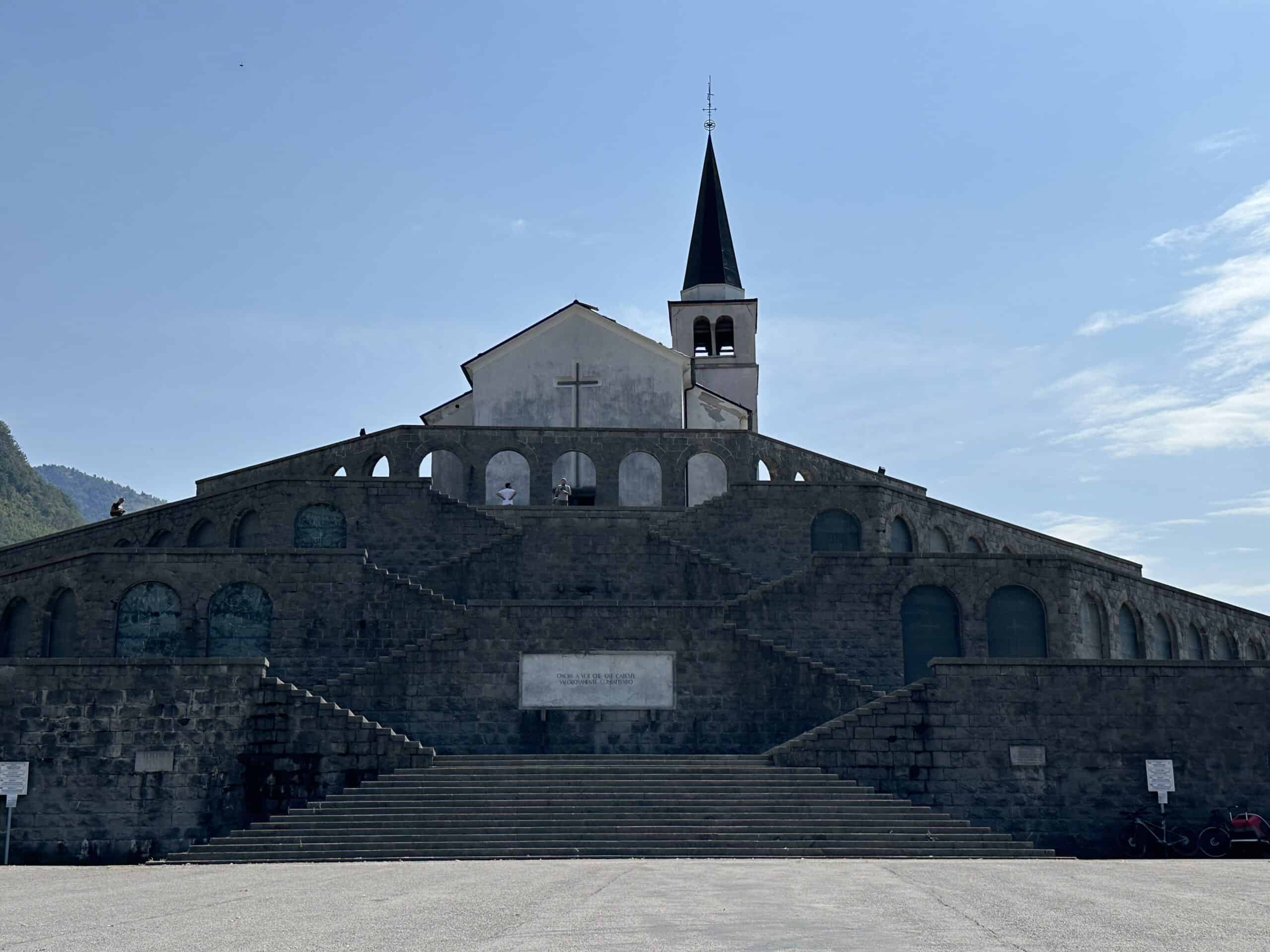
The Military Memorial is located on the hill overlooking the town of Caporetto, in western Slovenia on the border with Italy.
Located on the battlefield of Caporetto, it houses the remains of 7.014 Italians who fell during the battles of the Isonzo.
The work was started by the Italian State in 1936, during the period when Caporetto was in Italian territory.
The works were completed in September 1938.
In the center of the site is a small chapel on Gradič Hill dedicated to St. Anthony of Padua and consecrated in 1696.
Below this, the architect Giovanni Greppi built three modern octagonal structures that rise under the Baroque chapel and the sculptor Giannino Castiglioni sculpted the fourteen stations of the Via Crucis on the winding road that leads from the main square of the town to the sanctuary.
Among the 7.014 remains are those of 1.748 unknown soldiers, collected in six tombs located on the sides of the central staircase. The names of those who are known are set in marble panels.
Commemoration of Caporetto was problematic for the Italian government.
The defeat was regarded as a stain on the national character. To account for this, an acceptable national interpretative framework was needed, preserving both the dignity of the commanders and the admirable qualities of the troops.
Ossuary commemorates Caporetto as a national Calvary, combining the symbolism of the Catholic Passion with monumental elements. The pillars that mark the beginning of the winding road that leads to the summit bear, on one side, the cross and on the other the star of Italy.
The ossuary was inaugurated by Benito Mussolini on 20th September 1938.
Caporetto ossuary is the only monument to the Italian fallen that does not stand on Italian soil. The remains of all the other Italian fallen on Slovenian soil were moved to the Redipuglia ossuary in Italy.










